The LEGO Story: Preserving a Life With LEGO in a Book
Best of BrickNerd - Article originally published December 12, 2022.
Now released in English, the book that originally came out as “A Life With LEGO” has got a new title: “The LEGO Story”. And as stories go, I promise that this is one you will—as a BrickNerd reader—want to check out.
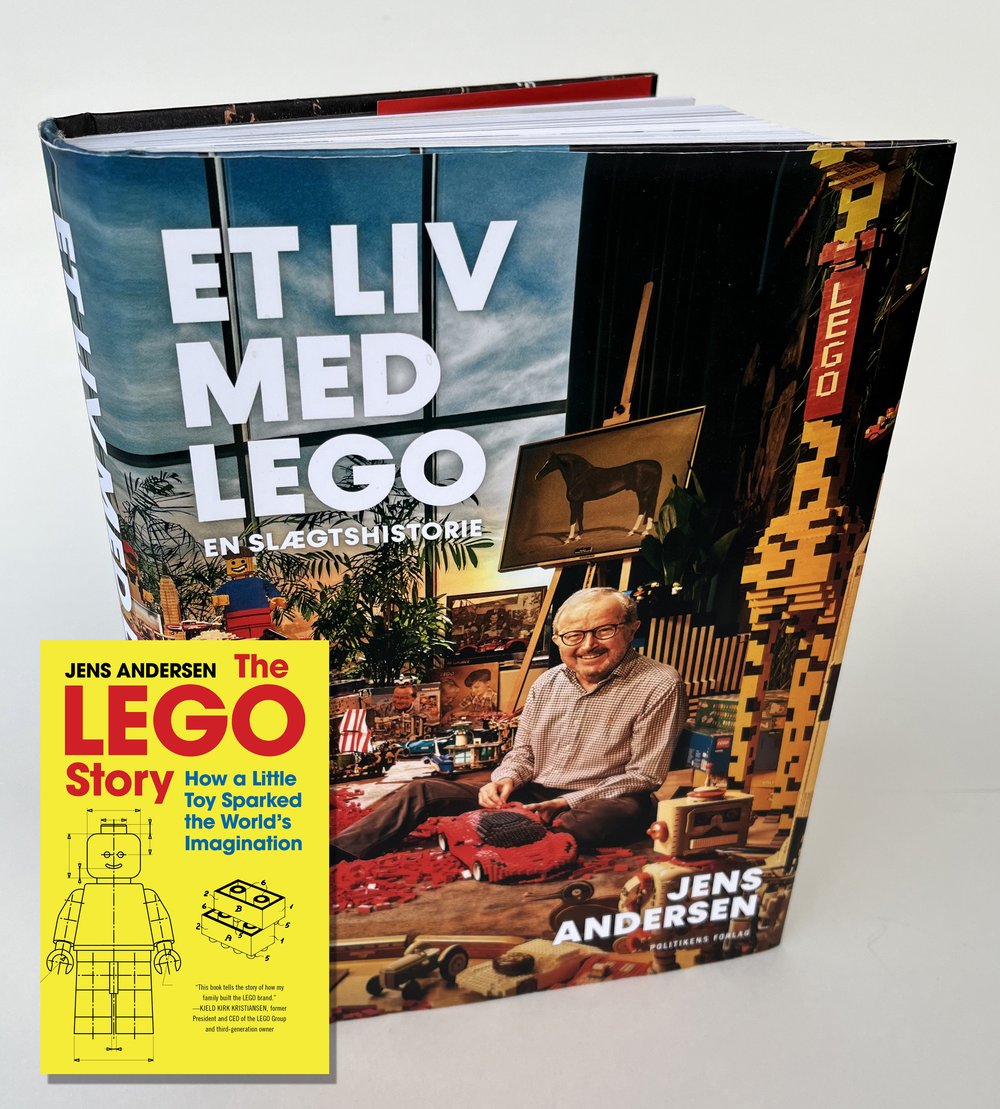
The original Danish book - with its gorgeous cover - and the English version, looking a bit more like a technical overview
Before we start, though: a little disclaimer. You may have noticed that at BrickNerd, we don’t really do traditional reviews (well, apart from Dave’s 10307 UCS Christmas Tree one from last month) unless we think of a highly creative, culturally significant, or in-depth angle. So clearly, this is not a standard review. But I’ll let you know a bit about the book—hopefully enough that you’ll realise why I believe you really ought to check it out. I also intend for this to be slightly less long-winded than my regular articles—after all, my previous one had to be split into three parts…
(Oh, and we have actually talked to the author. That might be interesting, too!)
A Surprise Announcement
The first time I heard of the book at all was when the steering group for the Skærbæk Fan Weekend (SFW) sent out an email in mid-September last year, informing of a last-minute opportunity for eventees who would be present at the now-traditional AFOL Day at LEGO House on the day before the opening of the SFW. Apparently, there was a new book coming out, and those who signed up would be able to purchase the book at LEGO House, and then have it signed.
Signed by author Jens Andersen… and none other than LEGO’s grand old man himself, Kjeld Kirk Kristiansen! Naturally, I jumped at the opportunity. Due to the short timing and Covid-19 distancing rules, there would sadly be no photos, so I didn’t get the chance to snap one there—but I did sneak in a little food container with a treasure in it: the one LEGO set ever designed by a member of the founding family, namely the 330 Jeep from 1968.
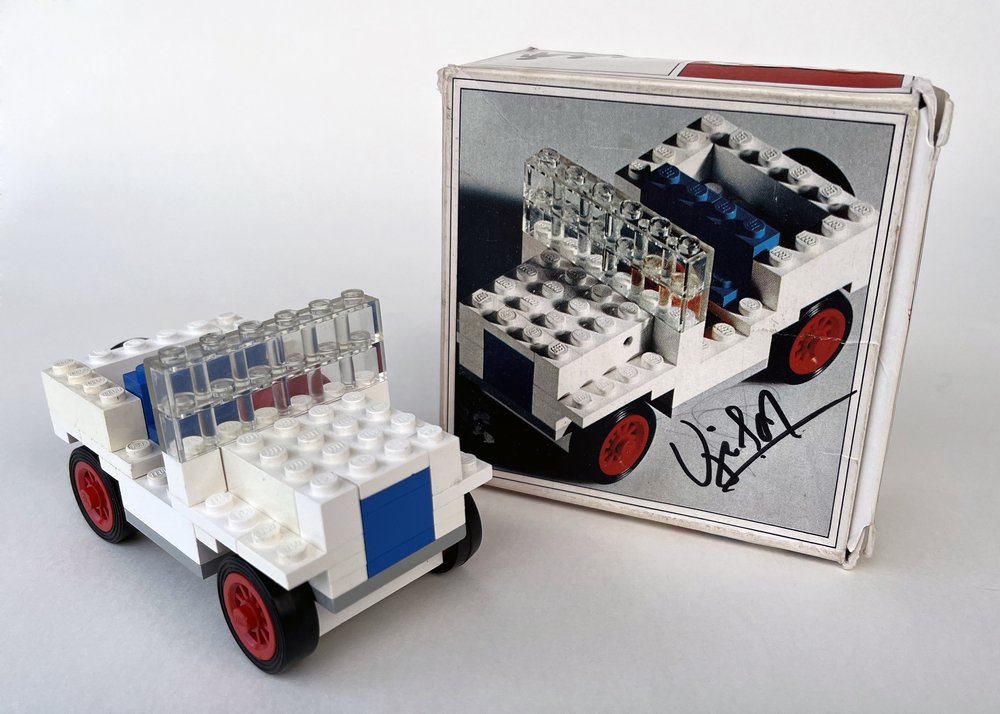
On the day, I entered the room where the two men were enduring the onslaught of one fan more eager than the next, and even though I was by no means the first in line, they were still remarkably cheery. Just when I came in, this conversation took place between Jens and Kjeld:
Jens: So, Kjeld, have you had a chance to build any sets recently?
Kjeld: Oh yeah! I’ve just finished the Colosseum.
Jens: Wow! What was that experience like?
Kjeld: Looooong.
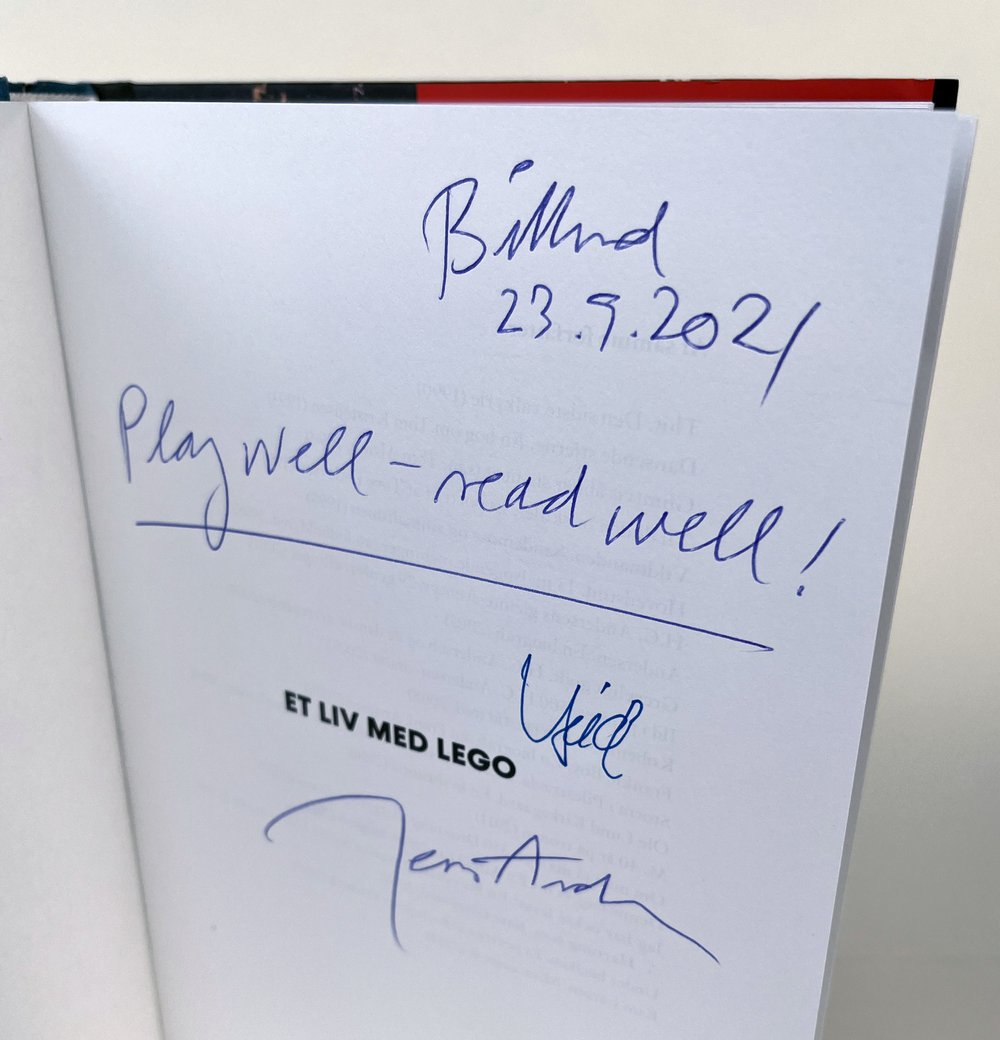
Then I pulled out my food container, and the second I took the little box out Kjeld’s eyes widened and he exclaimed, “Hey! That’s my model! I did that!”
I replied that I was aware of that, and I was wondering if he’d mind signing the box for me, as it resides proudly in the “trophy cabinet” in my living room, which he happily did. They both also signed the book, of course, which I then brought home with me after the Fan Weekend.
That Amazing Cover Shot
I have to admit that it took a while before I sat down with it—I was very busy at the time, with our annual Norwegian event coming up, among other things, having been “Covid-postponed” from April to October—but I took it with me for Christmas, and let me tell you: Once I started reading, it was very difficult to stop!
I should mention that my copy, a first edition, was obviously in Danish. After all, the English version wasn’t ready until November this year, but being Norwegian, I can read Danish pretty easily. The explanation for that is obviously the common root of the two languages—old Norse—aided by the fact that Norway spent 434 years under Danish rule from 1380 to 1814 (otherwise known as “the 400-year night” so no, it wasn’t voluntary).
So the language is one thing that sets it apart from the English version, but there are two other obvious differences as well: The title, which has been changed from the Danish “Et liv med LEGO: En slægtshistorie” (“A life with LEGO: a family history”) to the English “The LEGO Story: How a Little Toy Sparked the World’s Imagination”. But to me, the most baffling change is the cover design. I mean, would you just look at this fantastic photo:
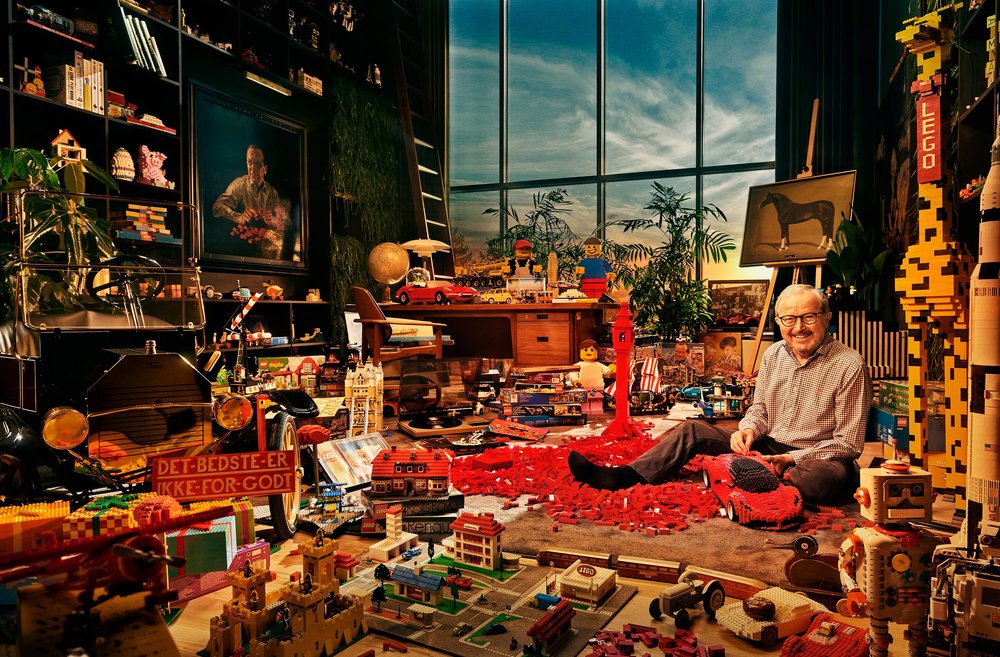
Kjeld Kirk Kristiansen, surrounded by his family history. A fantastic photo by Jes Larsen. Image via Henrik Mark on Behance
I added the link in the image caption above, but please do click through to really take in all the details. The objects surrounding Kjeld Kirk Kristiansen range from LEGOLAND giraffes built by the legendary Dagny Holm, the original “Det bedste er ikke for godt” wooden sign from the original LEGO factory, and a child-sized Ford T that was a gift from Kjeld’s father Godtfred in 1961, to an original wooden LEGO Duck, the legendary Yellow Castle and, in the bottom right corner, a robot built by LEGO House artist Stuart Harris, auctioned away for charity at the Skærbæk Fan Weekend right after I got my book signed (I wanted to bid but trust me, it disappeared out of my price range pretty quickly).
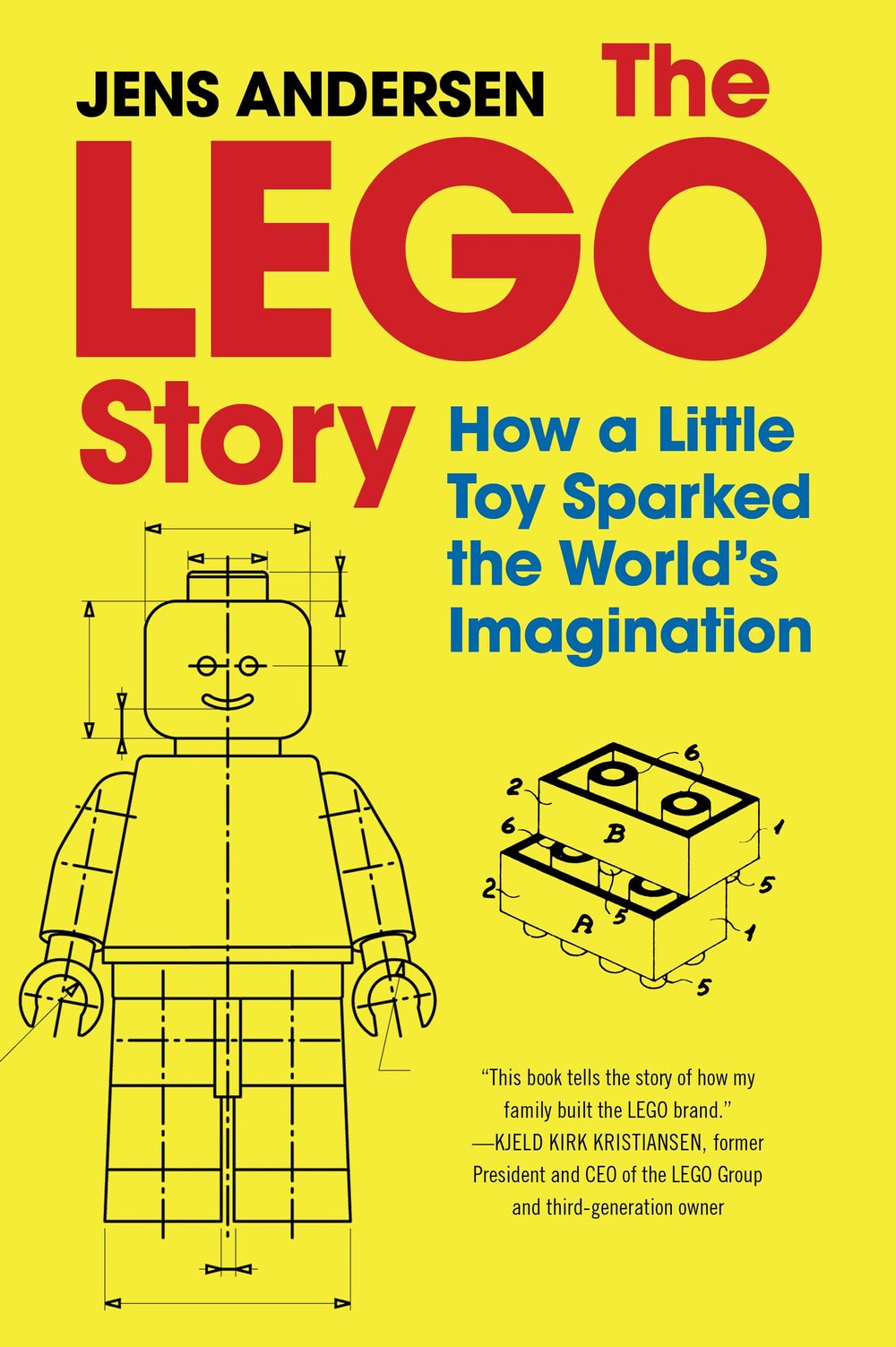
Nice cover. But most definitely infinitely more boring.
The photographer is Jes Larsen, and in my opinion, he’s created a stunning work of art which makes it all the more sad that the English cover looks like an industrial instruction manual. I guess the reason for that might be that Kjeld himself is a far more well-known person in Denmark than he is in most of the English-speaking world—certainly far less known than the LEGO minifigure that has replaced him on the cover—but what a loss, and made even more significant by the fact that the original cover image unbelievably doesn’t show up at all anywhere in the English version.
The image was obviously my first impression of the book, because on the original Danish version it’s printed not just on the front and back of the book itself, but also on the dust jacket. Which holds a pretty neat easter egg if you remove it: on the inside, there’s a complete guide to everything you can see in the cover photo. I’m telling you, you can get completely lost looking at all the details!
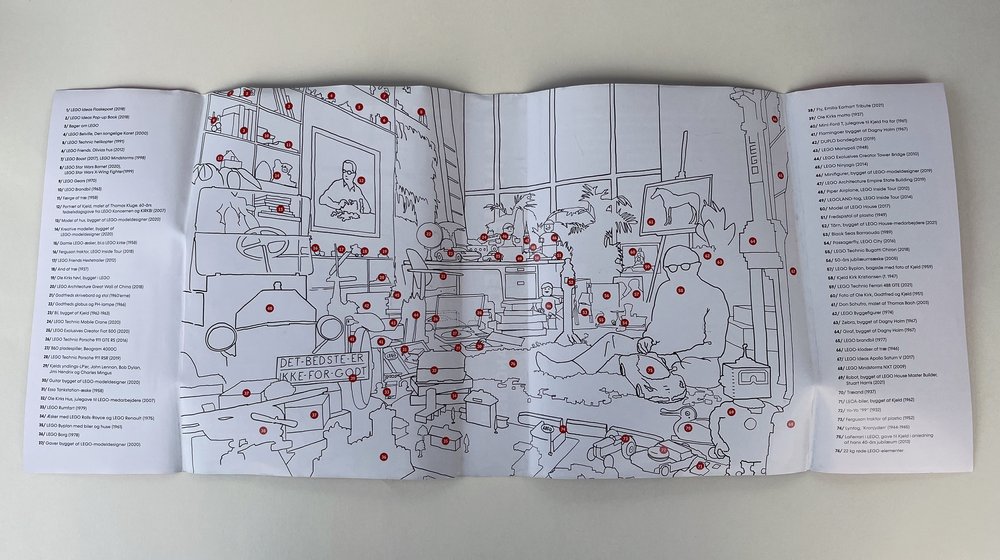
We did get a chance to ask author Jens Andersen a few questions about his book, and I’ll get back to those, but here’s what he told us about the cover shot:
“That was my idea. I persuaded Kjeld to sit among 22 kilos of red LEGO bricks with his Ferrari in his hands, surrounded by more than 200 pieces of LEGO – wood and plastic – from the past. All in all a picture showing a life with LEGO, and for Kjeld’s sake a very happy and playful life.”
So… How About the Inside?
Yes, the original cover is amazing. But what is inside is, I have to admit, even more so. As I plowed my way through the pages, I was really impressed with several things: how well the story flows, how open Kjeld is and how earnest his story is (more about that in a second) and, not least, just how many details from the LEGO history that I just never knew about—or, in many cases, had heard about, but finally got to learn the specifics about.
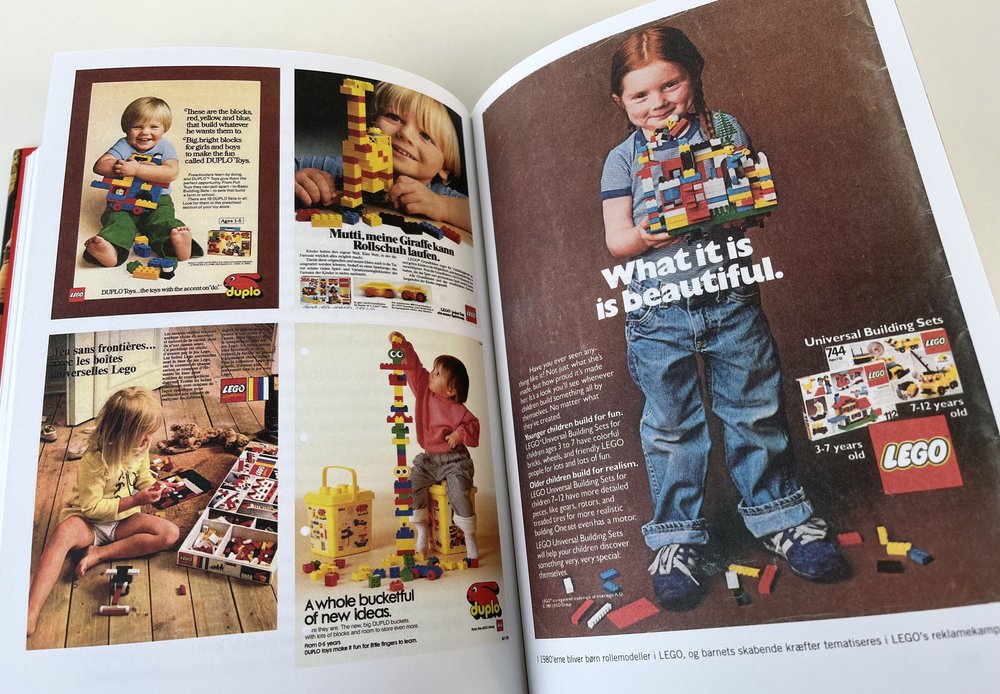
Examples of LEGO advertising from the 1980s, featuring children. Facsimile from “Et liv med LEGO”
For example, did you know that legally, the first owner of the LEGO company was a woman? When Ole Kirk Christiansen married Sofie Jørgensen in 1934, two years after his first wife, Godtfred’s mother Kristine, passed away, Sofie brought 1,000 Danish kroner—the equivalent of slightly more than 5,200 USD today—into the marriage, and Ole Kirk used that money to pay off the most immediate debts. As a consequence, the company was listed in Sofie’s name from 1935 to 1944, mainly to make sure that if the founder’s eagerness to expand the business with money he didn’t really have, got out of hand, and he were to be declared bankrupt… then her property wouldn’t be seizable!

The original Kiddicraft bricks. Photo by Mogens Skou Reklamefotografi, via lego
I won’t give away too many more secrets—the book has a ton of them though!—but you’ll also learn more about the Kiddicraft bricks that Ole Kirk first saw in 1947, when the German businessman who sold him LEGO’s first plastic moulding machine, visited Billund with a sample he had picked up from the British Industries Fair in London. These bricks were clearly what inspired Ole Kirk to make the big decision of leaving the wooden toys behind, and some new details, at least to me, are offered about the copyright infringement side of this story.
Kjeld’s Voice
I mentioned how well the story flows. Part of the reason for this is, undoubtedly, that it’s being told with the author’s writing and Kjeld’s own words alternating. This means the whole book feels a whole lot more personal, and to me, it was surprising to see just how open the man himself is throughout the book. It all feels very honest, not least because he talks about some potentially very touchy topics, a couple of which I’ll mention here.
The first is, at times at least, the relatively difficult relationship with his father. Godtfred is described as a man who was working a lot, leaving Kjeld and his siblings in his mother Edith’s care for most of the time. And when he finally handed over the reins of the company to Kjeld, he had a hard time letting go, often stating very clearly what his opinions were on important matters. The relationship between Godtfred and his three brothers wasn’t problem-free, either: Ole Kirk had a clear idea of which of the four siblings was best suited to take over. Godtfred wasn’t the oldest one, but his father’s intended line of succession is pretty obvious in this picture, taken on Ole Kirk’s 60th birthday in 1951:
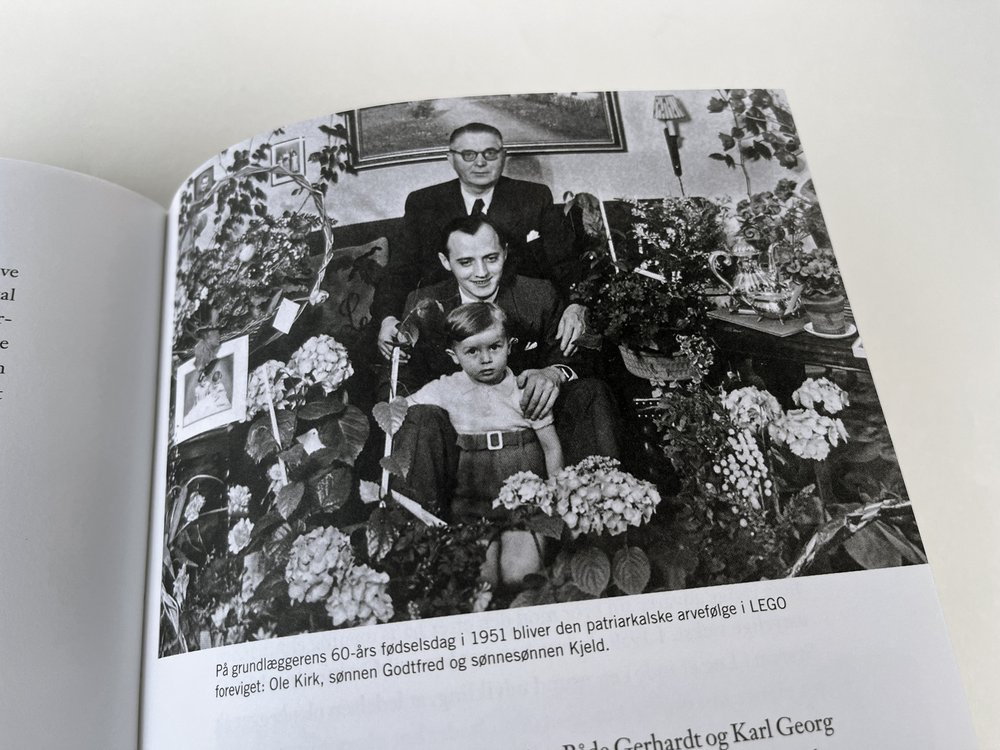
Facsimile from “Et liv med LEGO”
That is Godtfred and Kjeld (and a whole lot of flowers) accompanying the old man in the living room. A couple of other pictures in the book show the decaying relationship between the Kirk Christiansen brothers as a consequence of Ole Kirk’s choice, and this story was new to me. It makes for fascinating reading, and it undoubtedly makes the rest of the book feel even more believable—it’s not just the glossy part of the story that gets told.

Newspaper headlines after the tragic accident that claimed the life of Kjeld’s sister Hanne. Facsimile from “Et liv med LEGO”
The other topic—and an even more serious one—is Kjeld’s brush with death and his serious illness. I was aware of only one of those two: the car crash where his little sister Hanne and her boyfriend tragically lost their lives in 1969. Kjeld was thrown from the car and hospitalised with a cranial fracture as the most serious physical injury, remaining comatose until after his sister’s funeral. The accident almost caused Godtfred to sell the company, but he got through it—partly because of his faith in God, which is another recurring theme in the book—and eventually handed it over to Kjeld ten years later (at least on paper).
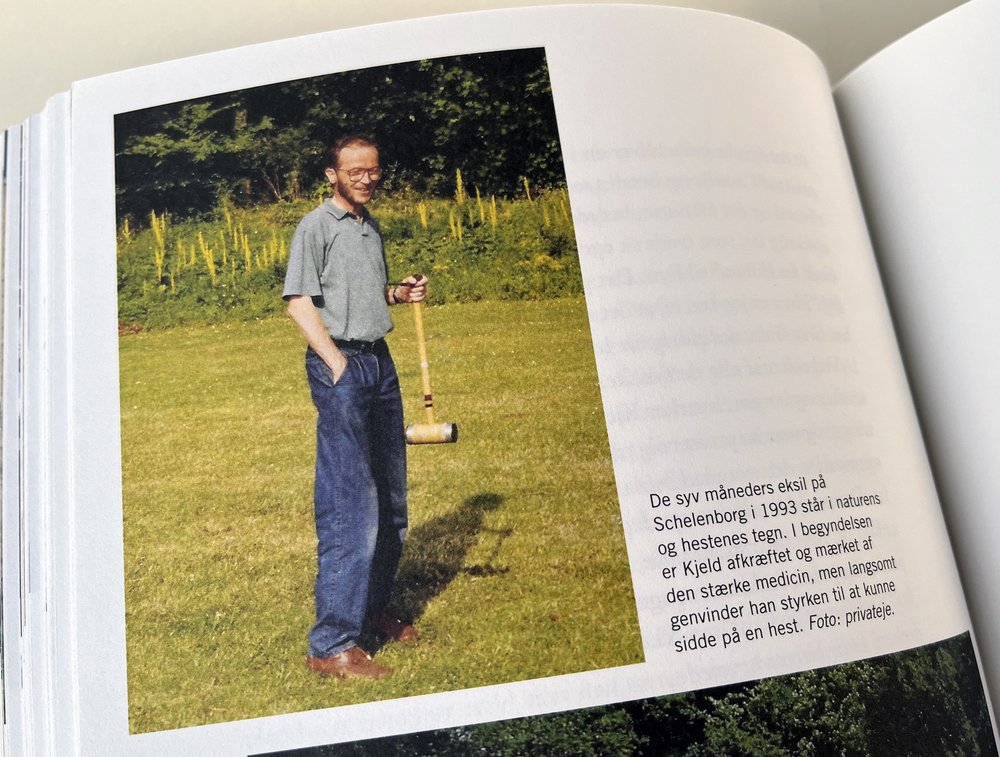
Kjeld in 1993. Facsimile from “Et liv med LEGO”
Most of BrickNerd’s readers will be aware of what Kjeld Kirk Kristiansen looks like, and quite a few have undoubtedly also met him. There is a picture of him in the book, though, where he is almost unrecognisable, taken in 1993, when he was first diagnosed with ulcerative colitis, an inflammatory bowel disease.
Because of his illness he ended up spending seven months at the family’s holiday home recovering, while trusted colleagues ran the business in his absence. The good thing that came out of it was, he says in the book, that he realised that the “fun” had gone out of his job—which again led to him delegating more work to others when he returned to Billund the following year.
Hey! I’ve Never Seen This On Brickset!

The lenticular mosaic at LEGO House showing four generations of LEGO owners
Those are a couple of the more sinister stories in the book, but I have to emphasise that it’s certainly not all gloomy! It’s fun to read about the early days and all the pranks that were pulled between members of the family, and how Kjeld’s relationship with the brick was shaped at an early age because he had his own little corner in the model building workshop. He was hands-on in a way his father Godtfred never was, which was part of the reason he ended up designing that little white Jeep. And for AFOLs, it’s interesting to see that his relationship with adult LEGO fans has a place in the book, and it’s reassuring to get some inside knowledge about how the motivation for the next generation to take over—Thomas Kirk Kristiansen, who is now chairman of the board—has grown over the years, much like it did with his father.
Maybe the single biggest surprise for me in the book, though, and the last little snippet I’m going to reveal (don’t worry, there’s a lot left for you to discover), was a picture of a LEGO set. I’m a complete sucker for rare LEGO stuff, and I own some very nice things that I treasure highly. I also consider myself quite well-versed in regional or limited edition LEGO sets—not least from the last decade!—so imagine my surprise when I turned to page 185 to see this:
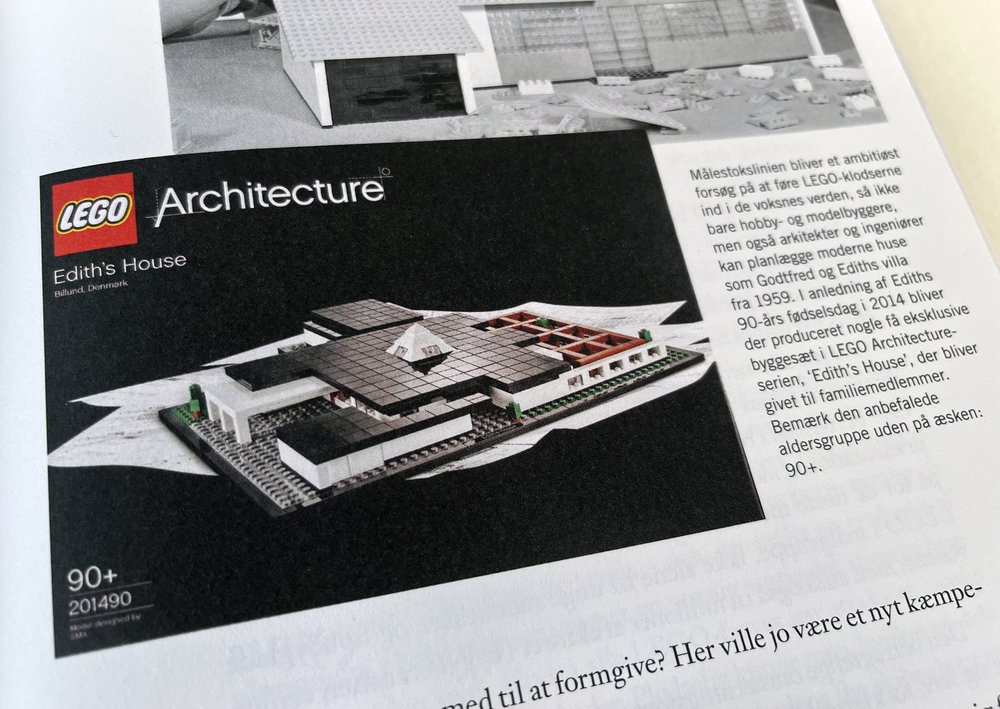
Edith’s House, the most exclusive of all Architecture sets! Facsimile from “Et liv med LEGO”
An Architecture set I had never heard about!
The explanation for that is very simple, of course. Set “201490” depicts Godtfred and Edith Kirk Christiansen’s house in the center of Billund, which now houses the Teddy Bear Art Museum. The set was designed for Edith’s 90th birthday in 2014 (hence the set number), and the age recommendation is therefore set to “90+”—which puts LEGO’s recently introduced 18+ portfolio to shame! Only a few sets were made, and they were all handed out to family members, so I’m sorry, Architecture collectors, good luck being a completist now…
A Word With The Author
So… you’ve heard what I think about the book, and you’ve heard a little bit about what you can read in the book. But to round off this article, what could be better than to hear from the author himself? Jens Andersen kindly agreed to answer some questions for BrickNerd.
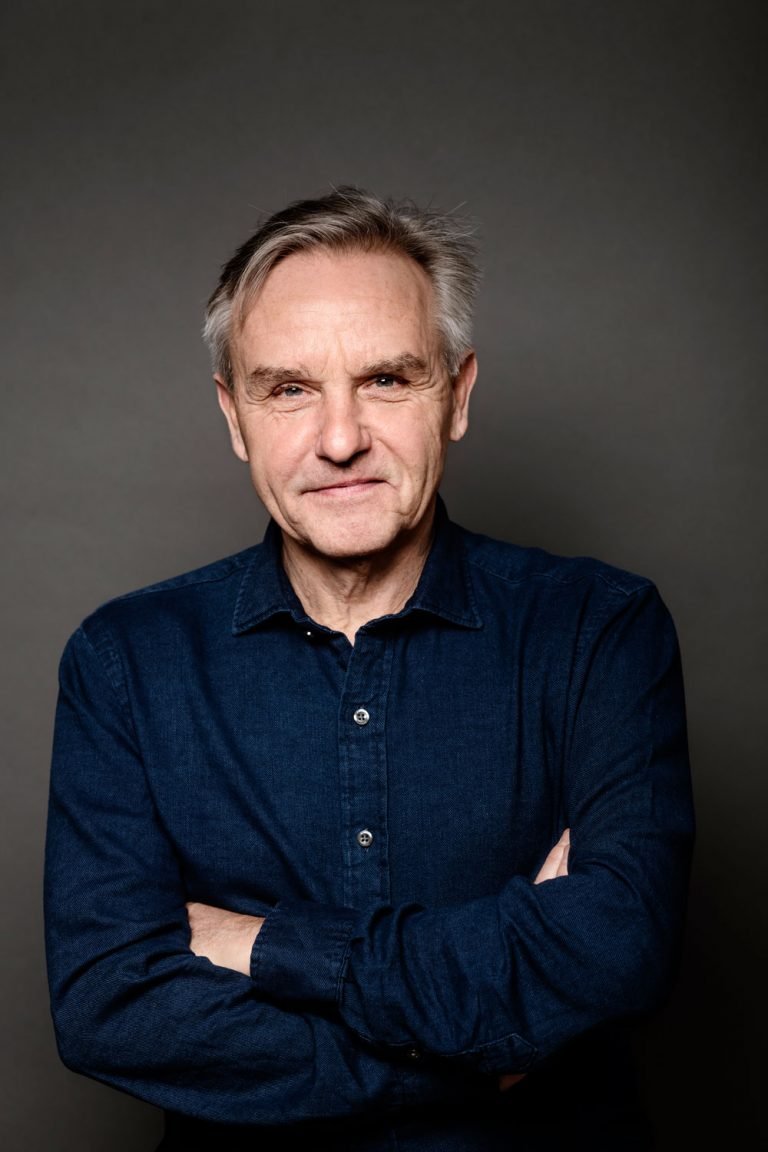
Jens Andersen. Image by Les Karner/jensandersen.info
BrickNerd: First of all, a question that I’m sure any LEGO fan reading the book would like to know the answer to, and one I’m pretty sure Kjeld Kirk Kristiansen must have asked you, too: How is your own relationship with the LEGO brick?
Jens Andersen: I was born in November 1955 while Godtfred Kirk Christiansen and LEGO launched the brilliant “LEGO System in Play” in Denmark. I grew up with System in Play, and my Christmas gift in 1960 was the LEGO Town Plan Cardboard, where I placed my small LEGO houses, church and gas station, “drove” small LEGO cars and trucks, placed policemen and bike-riders, pedestrians and flat painted plastic trees and flags. In the ‘60s I became a real KFOL, building with the brand new LEGO wheel in 1961-62 and later the motorized LEGO train in 1966. Those were the days!
Then—all of a sudden—came my Dark Age, that lasted until my first son was born in 1981. That was my LEGO rebirth! Together we built and lived in FABULAND, flew LEGO spaceships and used the minifigs in all kinds of role-play. The happy LEGO days stayed on with my daughter and another son in the 1990s. Now, being 67, I’m most of all a devoted DUPLO fan together with our three grandchildren (6, 2 and 1). A lot of small hands everywhere, with endless imagination. My best building experiences during the last year have been the Ideas Typewriter (21327) and Titanic (10294). Great sets!


BN: You are an experienced writer and author, and you have written biographies about the Danish Royal Family, among others. Is it difficult to get so close to the people you write about that you feel that you’re able to tell the story from their perspective?
JA: No, not really. Although I am working with lots of empathy and a never resting curiosity, I always try to keep an arm’s length to the main character in my biographies. Let me put it this way: Kjeld and I were never friends during the process, but indeed friendly—and mutually respectful, not to forget!
BN: In the foreword, you mention that you got the idea for the book in the fall of 2019, so I assume you approached Kjeld not long after that. Was it difficult to persuade him?
JA: During our very first meeting I felt he was a bit reluctant, or maybe hesitant is a better word. Kjeld really liked my idea that the story of LEGO and the Kirk Kristiansen family could be seen and understood through the changes in society’s view on children, childhood and the importance of play. I remember Kjeld said to me: “I get that LEGO employees have to know the story of my family and the company, but why the whole world?” My straight answer was: “Because it’s all about creativity, innovation, passion, faith, will and togetherness. A true fairy tale, that Hans Christian Andersen couldn’t have written any better.”
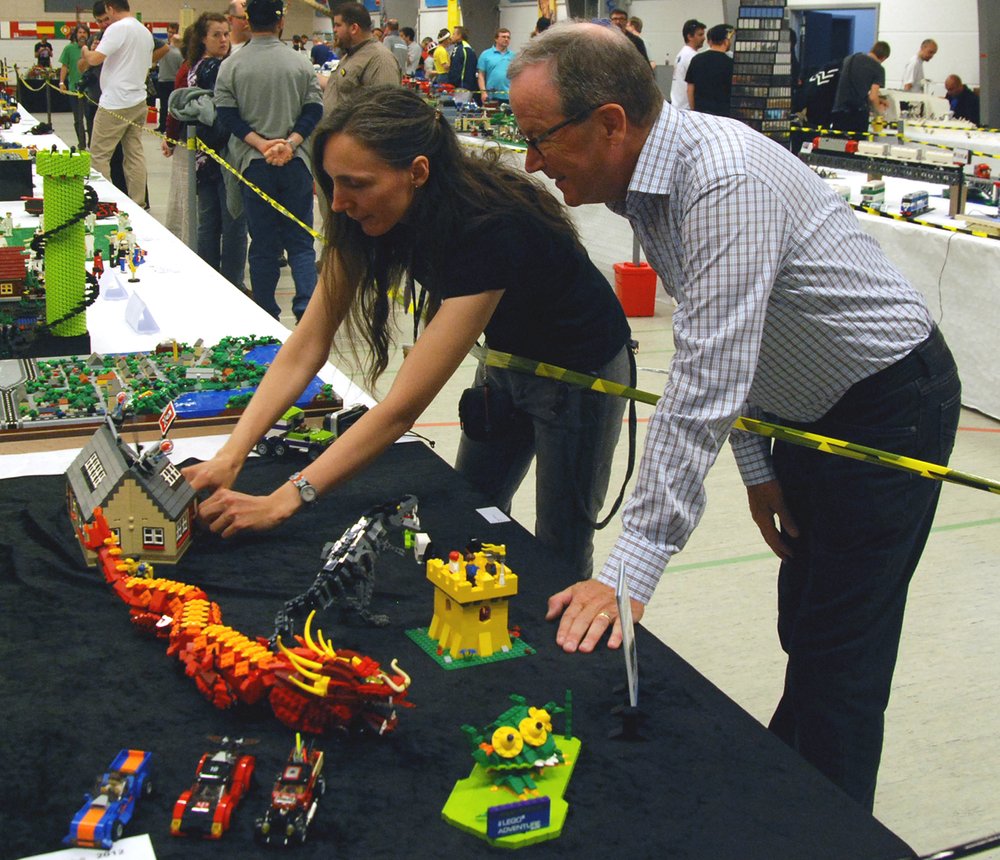
Megan Rothrock demonstrating some of her builds for Kjeld Kirk Kristiansen at the 2012 LEGO Fan Weekend in Skærbæk
BN: I’m sure many LEGO fans feel they “know” Kjeld, and many have had conversations with him, probably a bigger share than in the common Danish population—because he is, generally speaking, notoriously private. Does that make it feel like a bigger responsibility when you’re exposing the private matters of the family to a larger audience?
JA: Absolutely. Whether you write about a pop star, the royal family or wealthy people like Kjeld and his family, you have to be discreet. They have to have total faith in you, otherwise you won’t get any interviews at all, and neither any access to archives like the ones in Billund. Confidentiality is absolutely necessary in rare book writing experiences like “The LEGO Story”.
BN: You state that the book was written through monthly conversations over a period of a year and a half. Do you have any idea how many hours you’ve spent talking?
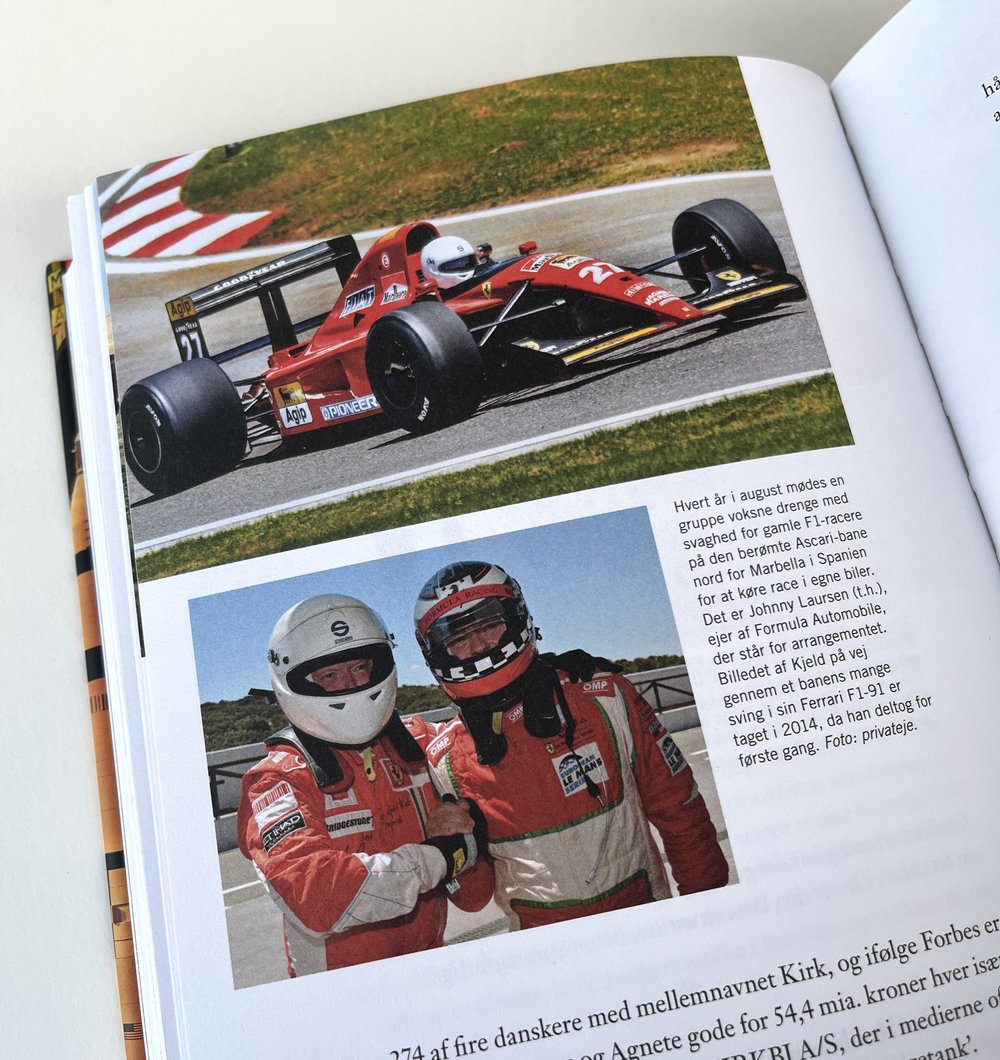
Kjeld Kirk Kristiansen, well-known “Ferrarista”, enjoying one of his more costly hobbies: driving his Ferrari F1-91 Formula One car on track. Facsimile from “Et liv med LEGO”
JA: Oh, a lot! Around 40 hours I guess, and always in Kjeld’s office or home. On one occasion we attended LEGO World in Copenhagen where Kjeld was treated like a rockstar among the many AFOLs. Kjeld is a warm, gentle and curious person, and we both enjoyed the many hours of talking, not only about unknown aspects of the LEGO history but also about the meaning and importance of play throughout life. We still meet from time to time in Billund, if not picking up the phone: “Hi Kjeld, how is life? Had any fun lately with a brand new LEGO set?” And then he starts telling...
BN: In the book, he speaks about the difficult relationship with his father, the loss of his sister, and his illness. These are very private topics. Were you surprised by how much he opened up about these things?
JA: Actually no. I felt from the beginning that Kjeld had decided that it was now or never to tell both the family story and the company story as he recalled it. During our talks he often told me that it was an exciting memory process for him and he enjoyed shedding light on the past. And especially the troubled relationship with his father, Godtfred Kirk Christiansen, was something he wanted to show and explain.
BN: Did you get many other surprises along the way, and if yes, can you mention some?

“Hjemlandstoner”, the blue songbook used at LEGO in Billund in the ‘50s. Image via miniland.nl
JA: Indeed. There are many hidden treasures in the comprehensive LEGO archives and lots of things that were news even to Kjeld. For example that his grandmother Sofie was the first legal owner of LEGO due to Ole Kirk Christiansen’s substantial debt in the 1930s. Another discovery was the importance of the Inner Mission—a very big religious movement in Denmark in the beginning of the 20th century—both in the family and the company. As late as 1955-60, every working day at the LEGO plant in Billund started with a devotion ceremony in the factory canteen for all employees. It started with the word of God, read by Ole Kirk, and ended with a song from a printed, blue LEGO songbook.
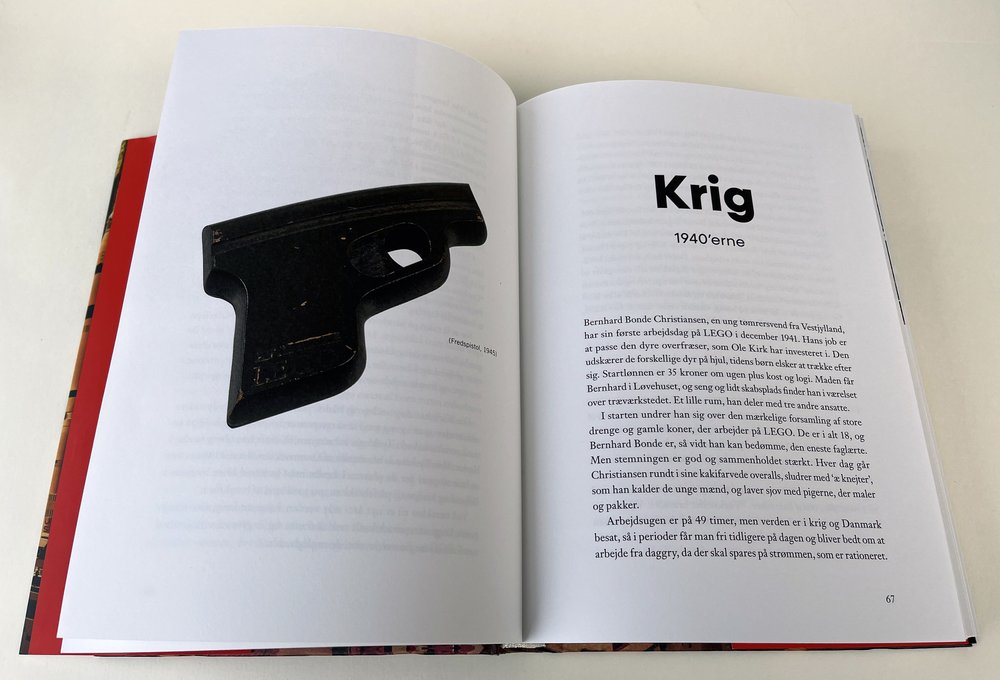
The last thing I will mention is the exciting and dramatic 1940s, when Ole Kirk insisted on buying a moulding machine, starting mass production of the so-called “Peace pistol” (see above), a brilliant plastic invention by Godtfred in 1945, and a massive sales hit in the following years in Denmark. LEGO’s success in the 1950s was based on strong religious faith… and a toy gun! And, of course, on some small self-locking plastic building bricks inspired by an English company called Kiddicraft. In the archives I found a lot of new details regarding the inspiration for the LEGO bricks: the Self-Locking Building Brick system and how it was developed by its visionary inventor, Hilary Page.
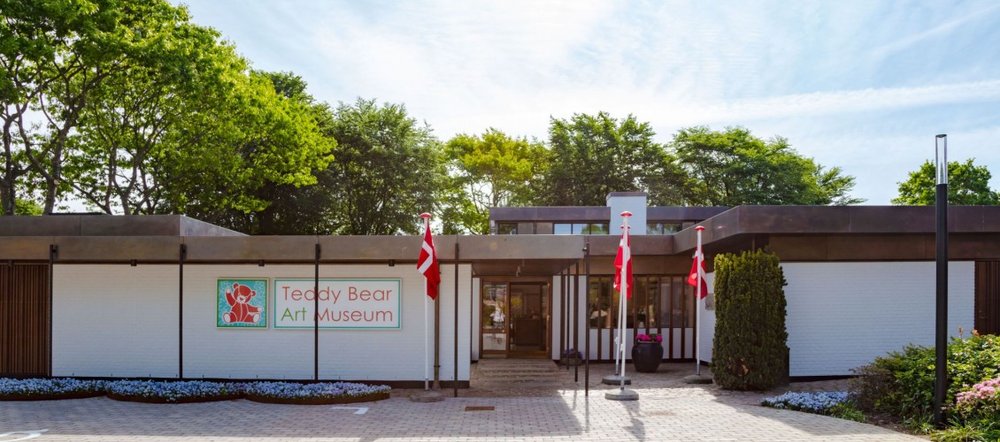
The house where Kjeld grew up in Billund, now home to the Teddy Bear Art Museum. Image via the museum website
BN: The stories in the book are fantastic, and the book itself has been made even more fantastic by the addition of an incredible selection of historical, and often private, pictures. Surely, you must have had access to many more. How difficult was that selection process?
JA: Kjeld and I sat for hours during two days looking through 50 photo albums on the shelves in the house in Billund where he grew up with his two sisters. It was very difficult to choose between so many interesting and hilarious photos from four decades, but even more difficult was the selection of pictures from the historical archives of LEGO. It contains an endless number of old photos: the plant, the workers, the managers, the meetings, the conferences, the parties and—not least—every single toy and set during more than 70 years of production.

Jens and Kjeld. Image via Politikens Forlag
Lost In Translation?
We say thank you to Jens Andersen for answering our questions, which we asked him before the release of the English version of the book on the 15th of November—something he admitted he was very excited about. For some weird reason, there is no Norwegian translation yet—maybe the publishers think we should just read the Danish one?—but according to Jens, there are a whopping eighteen different translations already out there or in the works. We’ve had a look around the internet to see how many we could find, and there are some interesting varieties in both cover choices and title changes!
As I mentioned, the original Danish title is “Et liv med LEGO: En slægtshistorie” (“A life with LEGO: a family history”), but no other version has the same literal title—and there are also other cover designs for some of the other translations:


The Polish version looks more like the English than the Danish one, but is still different, with the title “Historia LEGO: Opowieść o rodzinie, która stworzyła najsłynniejszą zabawkę na świecie” (“The LEGO Story: The story of the family that created the most famous toy in the world”). The Dutch version seems to be available with two different covers, one of which is the same as the Polish, and that title reads “LEGO: Het verhaal van het speelgoed van de eeuw” (“LEGO: The story of the toy of the century”).

A fourth different cover has been chosen for the Swedish version, called “Ett liv med LEGO: Historien om familjen som skapade världens populäraste leksak” (“A life with LEGO: The story of the family that created the world’s most popular toy”)—our Swedish BrickNerd readers will find that the front cover of the book is adorned by what is the back cover in Denmark, which for some reason is the part of the image that doesn’t contain Kjeld Kirk Kristiansen!
The rest of the translations I’ve found have retained the (amazing) original cover: The other Dutch version; the Finnish one, “LEGO: Kuinka tanskalaissuku valloitti maailman” (“LEGO: How a Danish family conquered the world”); and the Hungarian version, “LEGO egy életen át: Egy család és egy cég története” (“LEGO for life: The story of a family and a company”).




And finally, there’s a Chinese version, with the familiar cover… and the longest and easily most colourful title of the lot: 玩得好!樂高商業冒險之旅:樂高唯一授權傳記,百年品牌用小玩具激發全世界想像力 - roughly meaning, according to Google, “Have a great time! LEGO Business Adventure Journey: The only authorized biography of LEGO, the century-old brand inspires the imagination of the world with small toys.”

Do You Even Need a Conclusion?
I’m guessing it’s pretty clear what I think of the book, and I emphasise that I bought it myself and have not in any way been bribed by the author, the publisher, or the LEGO Company to ensure some kind words. But regardless of whether you read the Danish, the English, or the Chinese version: do it. (Or give it to the special LEGO lover in your life since there is just enough time left to get it before the big day.)
Even if this isn’t supposed to be a review, it’s difficult not to offer my opinion as an AFOL with an interest in the company’s history. I don’t think there’s any book out there that offers such a good view of the entire “LEGO story” so far, and it’s been done in an eloquent way that doesn’t in any way feel long-winded. It is, at least for now, the definitive LEGO history book as far as I’m concerned.
Will you buy the book for yourself or maybe for another LEGO enthusiast in your life? Or have you read some other amazing LEGO literature lately? Let us know in the comments below!
Do you want to help BrickNerd continue publishing articles like this one? Become a top patron like Charlie Stephens, Marc & Liz Puleo, Paige Mueller, Rob Klingberg from Brickstuff, John & Joshua Hanlon from Beyond the Brick, Megan Lum, Andy Price, Lukas Kurth from StoneWars, Wayne Tyler, Monica Innis, Dan Church, and Roxanne Baxter to show your support, get early access, exclusive swag and more.

